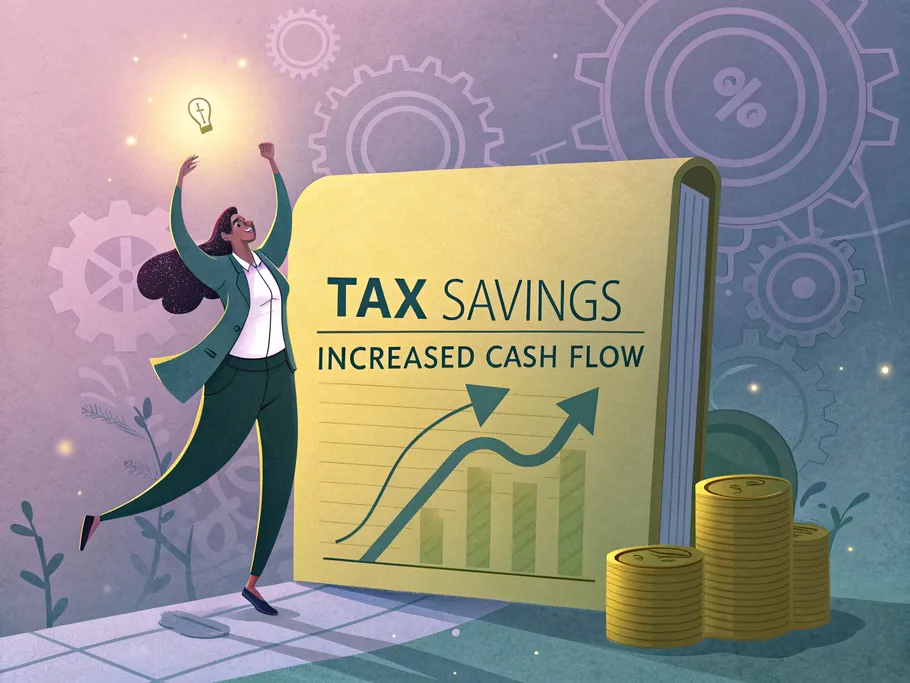Introduction: Demystifying Depreciation
Picture a small business owner who just splurged on some shiny new computers and office furniture—only to stumble upon the term “depreciation” while filling out their tax forms. It’s a classic scenario that leaves many scratching their heads. But what if I told you that depreciation could actually be your secret weapon for boosting cash flow and reducing your tax burden? Enter Section 168 of the U.S. Internal Revenue Code, which turns depreciation from a mere accounting term into a powerful financial tool. Let’s dive into how you can use this section to your advantage and make those expensive assets work even harder for you.

Understanding Section 168
Unpacking Tax Fundamentals: What’s the Big Deal?
So, what exactly is Section 168? It’s also known as 168(k) bonus depreciation, and it’s all about giving you a break when it comes to depreciating your business assets. Here’s the scoop: This section lays out the rules for depreciating tangible property—think machinery, equipment, furniture, and even buildings—over what’s called its “useful life.” That useful life is determined by the asset class, and it’s how long the IRS expects you to get value from whatever you’ve bought.
But here’s the kicker: The Tax Cuts and Jobs Act of 2017 shook things up big time. It allows you to take 100% bonus depreciation on qualifying property that you put into service between September 27, 2017, and January 1, 2023. What does that mean? Instead of spreading out the cost of your shiny new assets over several years, you could deduct the full cost immediately. That’s a game-changer for your bottom line.
Section 168(k) and Bonus Depreciation: Navigating Accelerated Depreciation
Think of Section 168(k) as your fast-pass to tax savings. It lets you speed up depreciation by allowing businesses to deduct a chunk of the cost of qualified property in the year it’s put into service. Why is that awesome? Because it means more flexibility and a better cash flow situation for your business.
Here’s how it works: for property acquired and put into service after September 27, 2017, and before January 1, 2023, you can deduct 100% of the cost right away. That’s right, no waiting around.
Eligibility Criteria
But hold up—there are some rules for what qualifies:
- The property has to be tangible (like stuff you can touch) with a recovery period of 20 years or less. It can also include computer software, water utility property, or qualified film, television, and live theatrical productions.
- It must be new to you, the taxpayer. That means it shouldn’t have been used by you before.
- You have to acquire and put it into service between the specified dates.
- Oh, and you need to own or lease it, with a basis for depreciation.
Keep in mind, there are some limitations. If you don’t have enough taxable income or if the asset isn’t primarily used for business, you might hit a wall.
Phase-Out Process of Bonus Depreciation: Timeline and Impact

So, here’s the catch: This 100% bonus depreciation isn’t going to last forever. After 2022, it starts to phase out gradually. Here’s what the timeline looks like:
- 2023: 80%
- 2024: 60%
- 2025: 40%
- 2026: 20%
- After 2026: No bonus depreciation at all
This schedule is based on when you place the asset in service, not when you buy it. That means you need to plan your capital expenditures carefully to make the most of this tax break.
Assets Eligible for 100% Bonus Depreciation: Exploring Eligible Categories
So, what kind of assets can you write off with 100% bonus depreciation? Here’s a quick rundown:
- Qualified Improvement Property (QIP): These are interior improvements to nonresidential buildings placed in service after December 31, 2017. Think HVAC systems, roofing, and security upgrades.
- New or Used Tangible Personal Property: Stuff like machinery, equipment, furniture, fixtures—basically anything with a recovery period of 20 years or less.
- Certain Specified Plants: Yep, even things like orchards and vineyards can qualify.
- Certain Film, Television, and Live Theatrical Productions: As long as they meet specific criteria.
Is Purchased Software Eligible for 100% Bonus Depreciation?
Yep, purchased software can qualify too! Here’s what you need to know:
- It must be depreciable under MACRS (that’s the Modified Accelerated Cost Recovery System).
- It has to be acquired after September 27, 2017, and placed in service before January 1, 2023.
- It should be new to you, the taxpayer.
- And you’ve got to use it primarily in your trade or business.
Differences Between Section 168 vs. 179: Clarifying Tax Code Alternatives
Alright, so you’ve heard about Section 168, but what about Section 179? Both offer ways to deduct asset costs, but they’re a bit different. Here’s a quick breakdown:
| Comparison criteria | Section 168 | Section 179 |
|---|---|---|
| Scope | Depreciation of tangible property | Expensing of tangible personal property and certain qualified real property |
| Dollar limit | No limit on bonus depreciation amount | Deduction limit of $1,160,000 (2023 tax year) |
| Qualified property | Includes QIP, new or used tangible personal property, specified plants, and certain productions | Generally more limited; includes furniture, equipment, certain software, and qualified real property improvements |
| Nature | Generally mandatory for qualified property | Elective deduction |
| Carryover | Unused deductions cannot be carried forward | Unused deduction can be carried forward |
| Deductible amount in 2023 | Up to 80% bonus depreciation | Up to $1,160,000 |
And hey, proposed regulations under Section 179 could shake things up even more, affecting how you decide to expense assets.
Strategic Implementation Tips: Maximizing Business Benefits
Want to make the most of Section 168? Here’s the deal: It’s all about using it strategically to boost your business. Think about whether taking a big tax deduction now or spreading it out over time works better for your financial goals.
Sometimes, holding off and investing in other growth opportunities might be the smarter move. The key is to weigh the immediate tax savings against your other options.
It sounds like you’re navigating complex choices, weighing immediate benefits against what best serves your long-term vision. Trust your careful consideration here.
Common Missteps to Avoid: Navigating Potential Pitfalls
Don’t fall into these traps: Misclassifying eligible assets is a big one. If you don’t correctly identify things like Qualified Improvement Property, you could miss out on deductions and hurt your cash flow. Misclassifying eligible assets like QIP? That’s just an expensive way to say “I love paying extra taxes.”

Avoid costly mistakes by carefully reviewing asset categories and making sure you meet all the requirements.
The Financial Takeaway: Making Depreciation Work for You
At the end of the day, Section 168 gives you the power to accelerate depreciation, giving your business an immediate financial boost. While Section 179 lets you expense up to a certain limit, bonus depreciation under Section 168(k) often offers a bigger write-off, especially for larger investments.
Here’s the bottom line: Understanding these options and the rules that come with them is crucial for effective tax planning. And hey, don’t hesitate to consult a tax professional—they’ll help you apply these strategies properly and maximize your financial advantages.
